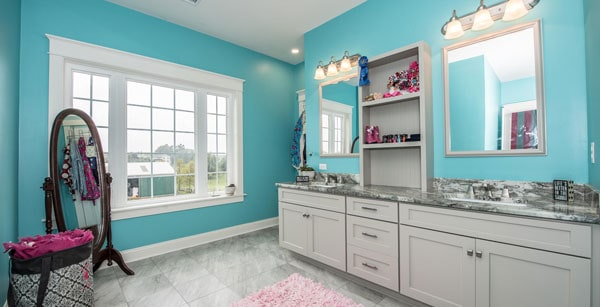In life, there are many feelings and thoughts we keep inside—things we want to say but never do. This is true not only in our relationships but also in how we feel about our homes. Just like people, homes have stories, memories, and emotions attached to them. This is where The Unsent Project can inspire us in a unique way, especially in the world of home improvement.
What Is The Unsent Project?
The Unsent Project is a creative idea where people write letters they never send. These letters express feelings—love, regret, hope, or frustration—that are kept private. The project was started by artist Rora Blue, who collects and shares these unsent letters to create a safe space for emotional honesty.
While the original project focuses on personal relationships, the concept can beautifully apply to our homes. Many of us have unsent “letters” to our homes—unspoken feelings about changes we want to make, memories we cherish, or frustrations we face.
Rather than keeping these thoughts bottled up, we could transform them into greeting cards addressed to our living spaces, acknowledging both our dreams and disappointments about our homes. Home improvement is not just about fixing walls or painting rooms; it’s about expressing ourselves and healing through the spaces we live in, much like how e-cards allow us to communicate emotions we might otherwise struggle to voice.

How The Unsent Project Relates to Home Improvement
Our homes reflect who we are. When we renovate or decorate, we are telling a story—sometimes a story we haven’t fully expressed yet. Here’s how The Unsent Project’s idea can connect with home improvement:
Unsent Letters to Your Home: Imagine writing a letter to your home, expressing gratitude for shelter, memories, or even frustrations about outdated spaces. This can help you understand what changes you truly want.
Emotional Release Through Renovation: Just as writing unsent letters helps release emotions, renovating a room can symbolize a fresh start or healing from past experiences.
Finding Closure: Sometimes, a home holds memories of difficult times. Remodeling or redecorating can be a way to move forward and create new positive memories.
Self-Expression: Your home is your canvas. Changes you make—big or small—reflect your personality and growth.
Protecting Your Peace: Like unsent letters protect relationships from conflict, thoughtful home improvements can create a peaceful environment where you feel safe and happy.
Examples of Unsent Letters in Home Improvement
To help you connect with this idea, here are some examples of “unsent letters” you might write related to your home:
A letter to the old kitchen, thanking it for the family meals but explaining why it’s time for a modern update.
A letter to a neglected garden, promising to bring it back to life and fill it with beauty.
A letter to a noisy neighbor, expressing your wish for peace without confrontation.
A letter to yourself, encouraging patience and creativity as you tackle a big renovation project.
A letter to a room that holds sad memories, saying goodbye to the past and welcoming new energy.
Writing these letters can help clarify your feelings and guide your home improvement decisions.
Benefits of Combining The Unsent Project with Home Improvement
1. Emotional Clarity Before Renovation
Before starting a project, writing an unsent letter to your home helps you identify what you really want to change and why. This clarity can save time and money.
2. Healing Through Space Transformation
Renovating or redecorating can be a therapeutic process. It allows you to release old emotions and create a space that supports your well-being.
3. Meaningful Design Choices
When you connect emotionally with your home, your design choices become more meaningful and personal, making your space truly yours.
4. Stress Reduction
Home improvement projects can be stressful. Writing unsent letters helps manage emotions and reduce anxiety by providing an outlet for your thoughts.
5. Creating a Positive Environment
By expressing and addressing your feelings about your home, you create a more positive and comfortable living environment.
How to Use The Unsent Project Concept in Your Home Improvement Journey
Step 1: Write an Unsent Letter to Your Home
Take a moment to write a letter to your home. Express what you love, what frustrates you, and what you hope for. Don’t hold back.
Step 2: Reflect on Your Feelings
Read your letter and notice any strong emotions or recurring themes. This will help you prioritize your renovation or decorating plans.
Step 3: Plan Your Project with Intention
Use your insights to create a home improvement plan that reflects your emotional needs and personal style.
Step 4: Document Your Progress
Consider writing letters or journal entries throughout your project to capture your evolving feelings and experiences.
Step 5: Celebrate Your New Space
Once your project is complete, write a final letter expressing gratitude and how the changes have affected you.

Frequently Asked Questions (FAQs)
What is the main purpose of The Unsent Project?
The main purpose is to provide a safe way for people to express feelings they find hard to say out loud, helping with emotional release and self-understanding.
How can writing unsent letters help with home improvement?
Writing unsent letters to your home can clarify your feelings about your space, guide renovation decisions, and turn home improvement into a healing and meaningful process.
Do I have to share my unsent letters publicly?
No, sharing is optional. The letters can be private or anonymous. The important part is the emotional expression and reflection.
Can this concept help with family conflicts related to home renovations?
Yes, writing unsent letters can help you process your feelings and communicate more clearly with family members, reducing conflicts.
What if I don’t like writing?
You can adapt the idea by recording a voice memo, drawing your feelings, or simply thinking about your unsent letter as a mental exercise.
How do I start a home improvement project inspired by The Unsent Project?
Start by writing your unsent letter to your home, then use the emotions and insights from that letter to plan your renovation or decorating steps.
Final Thoughts
The Unsent Project teaches us that not all feelings need to be spoken aloud to be powerful. By applying this idea to home improvement, we can transform our living spaces into reflections of our inner selves. Writing unsent letters to your home helps you connect emotionally with your space, making renovations more meaningful and healing.
So next time you think about remodeling a room or redecorating, try writing an unsent letter to your home first. You might discover new inspiration and a deeper connection to the place where your life unfolds.












